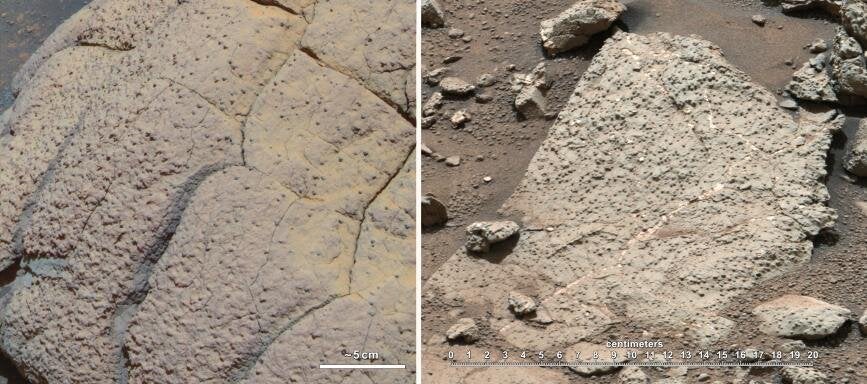Nasa's Mars rover Curiosity has found conditions suitable for ancient life.
The $2.5 billion rover found evidence in a rock sample that the key chemical ingredients for life are all present on the red planet.
In a press conference the space agency said that sulfur, nitrogen, hydrogen, oxygen, phosphorus and carbon had all be identified in the rocks taken from an ancient stream bed in the Gale Crater.
"A fundamental question for this mission is whether Mars could have supported a habitable environment," said Michael Meyer, lead scientist for Nasa's Mars Exploration Program.
"From what we know now, the answer is yes."
The data points to an ancient 'Grey Mars' covered in water and mud, with conditions that make life if not certain than at least easily possible across the planet, Nasa added.
"We have found a habitable environment that is so benign and supportive of life that probably if this water was around and you had been there, you would have been able to drink it," said John Grotzinger, Curiosity's project scientist according to the BBC.
The breakthrough is thanks to work done via the rover's Sample Analysis at Mars (SAM) and Chemistry and Mineralogy (CheMin) instruments on samples taken from an ancient wet land.
Nasa said the crater was once the site either of river bed or a lake, which "provided chemical energy and other favorable conditions for microbes".
About 20 percent of the sample is made of clay, which is made when relatively fresh water reacts with minerals like olivine.
"The range of chemical ingredients we have identified in the sample is impressive, and it suggests pairings such as sulfates and sulfides that indicate a possible chemical energy source for micro-organisms," said Paul Mahaffy, principal investigator of the SAM suite of instruments.
The rover will now continue on its mission to investigate other nearby sites, including the nearby 'Mount Sharp' where exposed rock layers may provide new insights into how likely it is that life once thrived on the planet.
"We have characterized a very ancient, but strangely new 'gray Mars' where conditions once were favorable for life," said John Grotzinger, Mars Science Laboratory project scientist at the California Institute of Technology.
"Curiosity is on a mission of discovery and exploration, and as a team we feel there are many more exciting discoveries ahead of us in the months and years to come."
